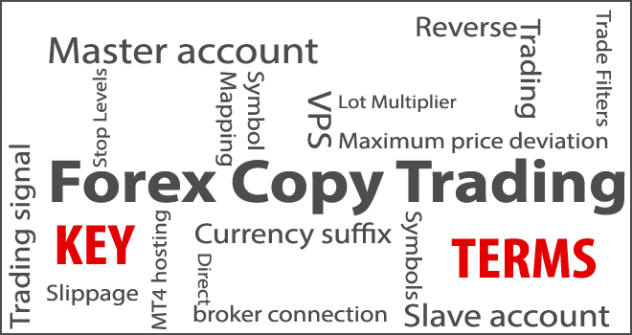Forex Trading Terminology: Key Terms Every Trader Must Know
Navigating the forex market can feel like learning a new language. To trade effectively, you must understand the fundamental terminology. This article breaks down essential forex trading terms, explaining their meaning and practical application.1
1. Currency Pair:
- Definition: The foundation of forex trading, a currency pair represents the exchange rate between two currencies.2 For example, EUR/USD (Euro/US Dollar).3
- Usage: Traders speculate on whether one currency will rise or fall in value relative to the other.
- Context: All forex trades involve buying one currency and selling another.4
2. Base Currency/Quote Currency:
- Definition:
- The base currency is the first currency listed in a pair (e.g., EUR in EUR/USD).5
- The quote currency is the second currency (e.g., USD in EUR/USD).6
- Usage: The exchange rate indicates how much of the quote currency is needed to buy one unit of the base currency.
- Context: Understanding this distinction is vital for interpreting exchange rates.
3. Pip (Point in Percentage):
- Definition: The smallest price movement a currency pair can make. Typically, it's the fourth decimal place (0.0001).7
- Usage: Pips measure profit or loss.8
- Context: Traders calculate potential gains or losses based on pip movements.9
4. Lot:
- Definition: A standardized unit of measurement for trading currency.10 Common lot sizes include:
- Standard lot (100,000 units)11
- Mini lot (10,000 units)12
- Micro lot (1,000 units)13
- Usage: Lot size determines the trade's volume and affects potential profit or loss.14
- Context: Choosing the right lot size is crucial for risk management.15
5. Spread:
- Definition: The difference between the bid price (the price a buyer is willing to pay) and the ask price (the price a seller is willing to accept).16
- Usage: The spread represents the broker's profit.17
- Context: Tight spreads mean lower trading costs.18
6. Leverage:
- Definition: Borrowed capital that allows traders to control larger positions with a smaller amount of their own money.
- Usage: Leverage magnifies potential profits but also potential losses.19
- Context: While it can increase gains, it also increases risk. So it must be used with caution.
7. Margin:
- Definition: The amount of capital required to open and maintain a leveraged position.
- Usage: Margin acts as a security deposit.20
- Context: If losses exceed the margin, a "margin call" occurs, requiring the trader to deposit more funds.21
8. Bullish/Bearish:
- Definition:
- Bullish: Expecting prices to rise.22
- Bearish: Expecting prices to fall.23
- Usage: These terms describe market sentiment.
- Context: Traders use these terms to describe their market outlook.
9. Exchange Rate:
- Definition: The value of one currency in relation to another.
- Usage: It determines how much of one currency can be exchanged for another.
- Context: Exchange rates fluctuate constantly due to various economic and political factors.24
10. Volatility:
- Definition: The degree of price fluctuation in a market.
- Usage: High volatility means rapid and significant price changes.25
- Context: Volatility creates trading opportunities but also increases risk.26
11. Liquidity:
- Definition: The ease with which an asset can be bought or sold.
- Usage: High liquidity means trades can be executed quickly and with minimal price impact.27
- Context: Major currency pairs are highly liquid.28
12. Order Types:
- Market Order: Executed at the current market price.
- Limit Order: Executed at a specific price or better.
- Stop-Loss Order: Closes a position at a predetermined price to limit losses.
- Take-Profit Order: Closes a position at a predetermined price to secure profits.
- Usage: Order types allow traders to control their entry and exit points.29
- Context: Proper use of order types is essential for risk management.30
Why Understanding Forex Terminology Matters:
- Informed Decisions: Knowing the terminology allows you to analyze market data and make informed trading decisions.
- Risk Management: Understanding terms like leverage, margin, and stop-loss orders is crucial for managing risk.31
- Effective Communication: Being familiar with forex language enables you to communicate effectively with brokers and other traders.
By mastering these key terms, you'll be well-equipped to navigate the forex market with greater confidence.
Related Articles
What is Trading Leverage?
Alright, let's break down trading leverage in Forex in a way that's super easy to grasp, even if you're brand new to this. Trading Leverage in Forex: Your Trading Power-Up Imagine you have a small amount of money, but you want to control a much ...How Trading in Forex is Profitable Compared to Other Financial Markets?
Unlocking Profit Potential: Why Forex Trading Stands Out When exploring financial markets, the question of profitability is paramount. Forex trading, the world's largest and most liquid market, consistently attracts traders seeking substantial ...How to Create an Account on Trade-Dynamics and Start Forex Trading Safely
Are you ready to trade forex and maximize your profits? Trade-Dynamics offers a secure, easy-to-use forex trading platform with real-time charts, analysis tools, and expert support. This step-by-step guide will help you create your account, secure ...What is Swap
Alright, let's demystify Forex swaps and turn them into a clear, actionable concept for your audience. Unlocking Hidden Profits: Understanding Forex Swaps In the dynamic world of Forex trading, understanding all the nuances is crucial for success. ...
